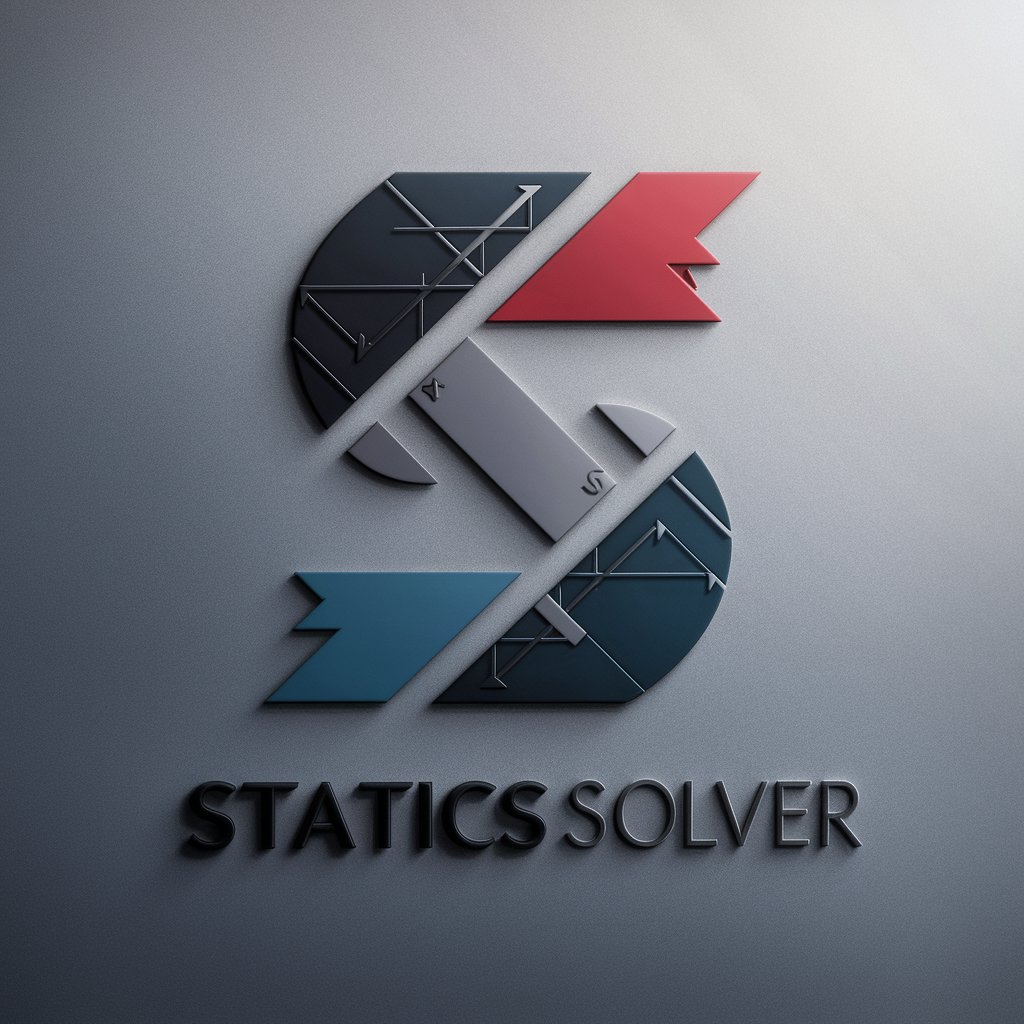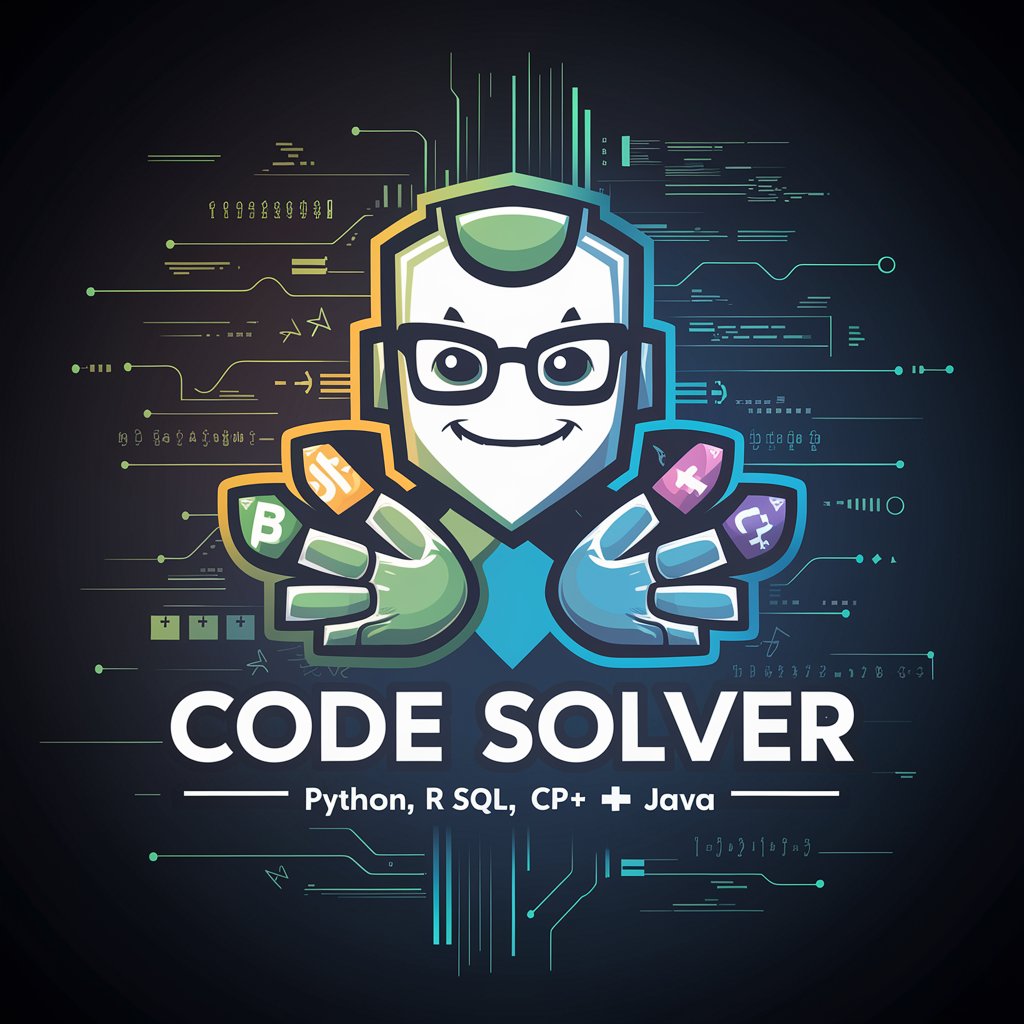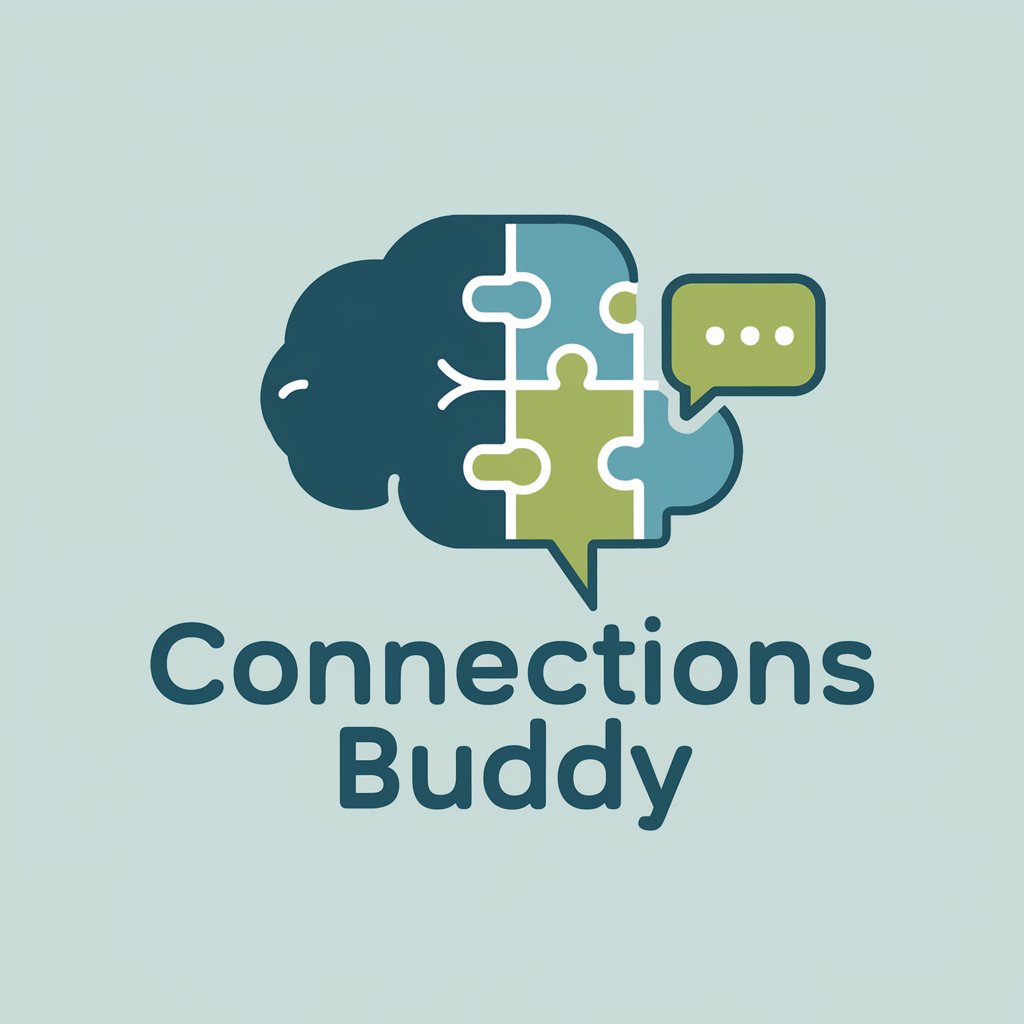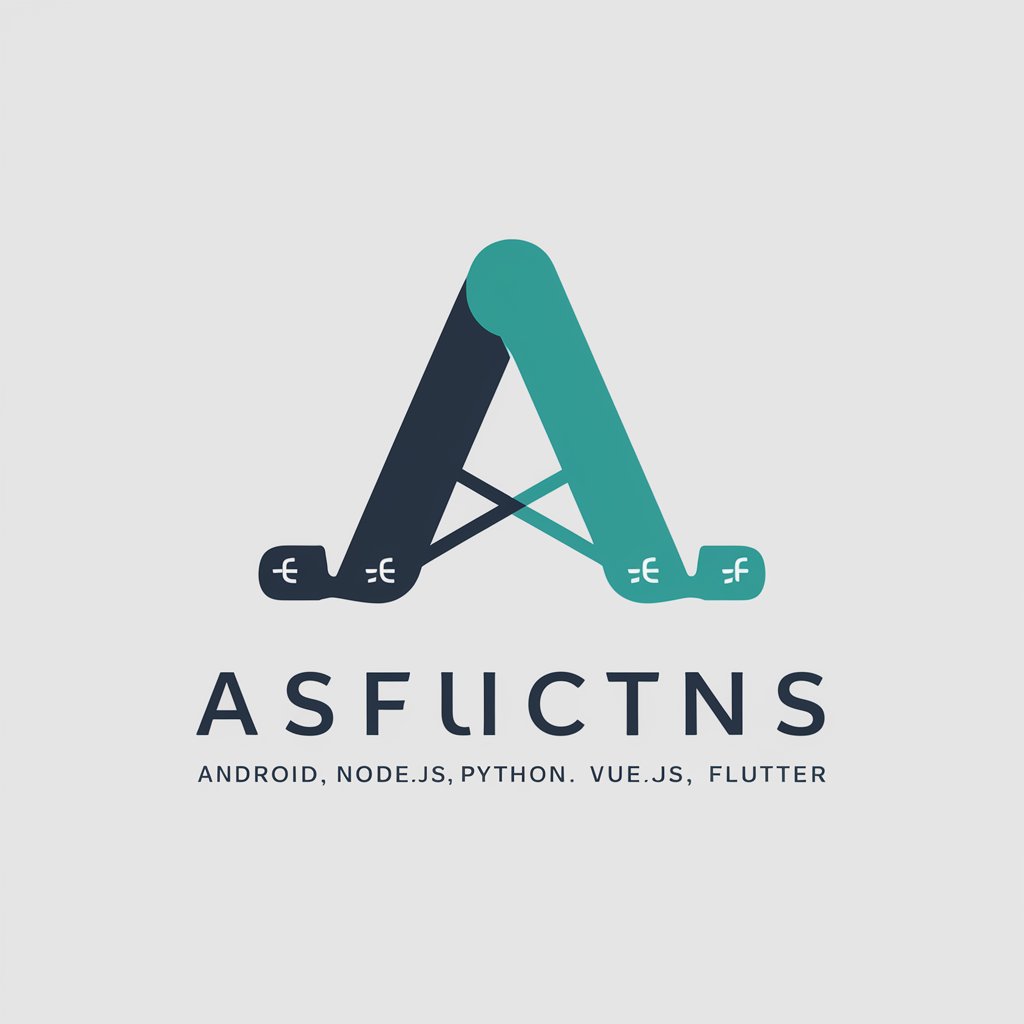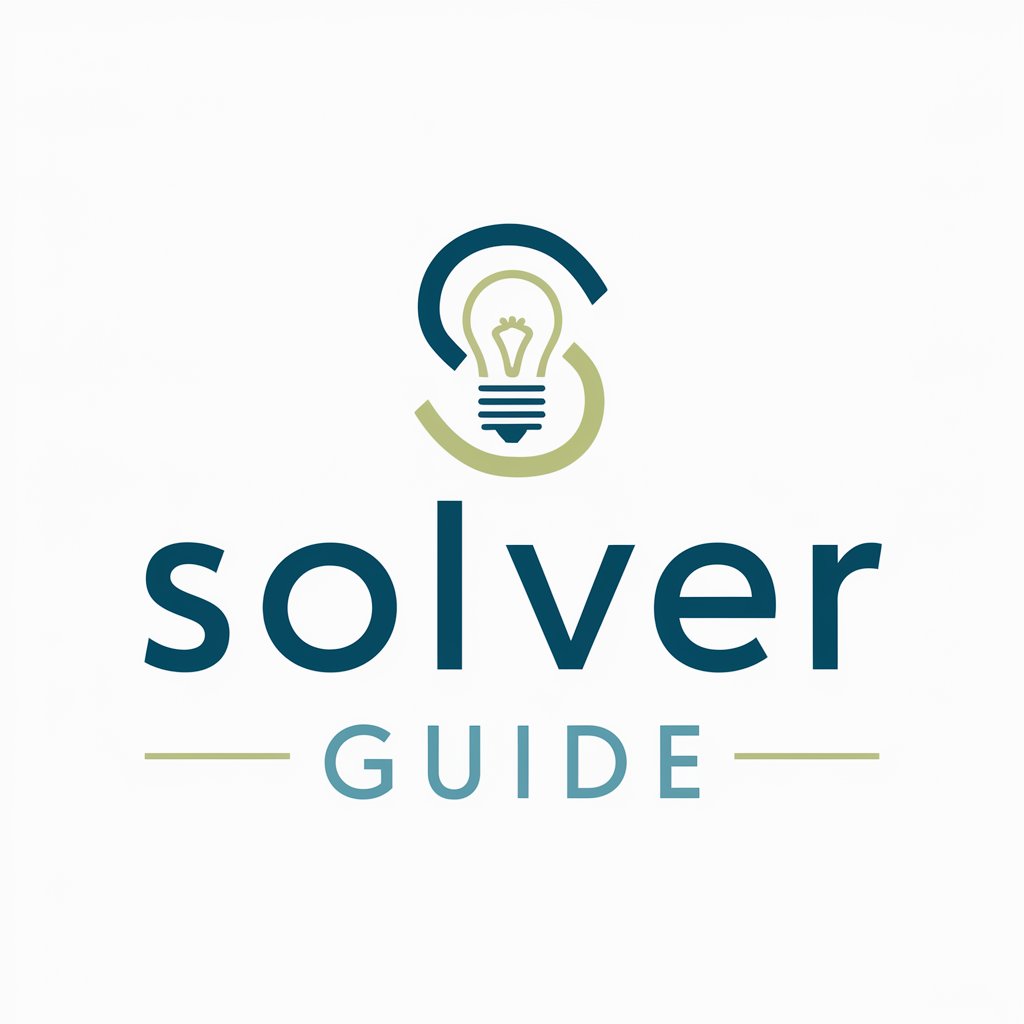
Connections Solver - word-puzzle pattern recognition tool.
Solves NYT Connections Puzzles
AI-powered word puzzle solver.
Hi, I am the Connections Puzzle Solver Bot! Give me a set of 16 words and I'll give you the first grouping. If that is correct, I will find additional groupings until all 4 groups are discovered.
Get Embed Code
Introduction to Connections Solver
Connections Solver is a specialized tool designed to analyze and group seemingly unrelated words or concepts into meaningful categories. The primary goal is to help users solve puzzles by identifying hidden relationships, such as common themes, attributes, phrases, or categories that connect words together. The tool excels in recognizing patterns, whether they are based on the type of object, function, usage, or part of a well-known phrase. Connections Solver’s design revolves around offering a structured approach to puzzle-solving by analyzing word groupings, eliminating false associations, and guiding users toward correct solutions. For example, imagine being given the words 'broil', 'timer', 'bake', and 'light'. At first glance, these words may not appear related, but the solver identifies that these are all buttons you might find on an oven. Another scenario might involve grouping animals like 'cobra', 'moccasin', 'python', and 'boa', which could appear as a set of snakes, but then be discarded if they disrupt other more fitting groupings. Powered by ChatGPT-4o。

Key Functions of Connections Solver
Grouping Words by Categories
Example
Croc, loafer, moccasin, slipper
Scenario
Connections Solver identifies that these are all types of footwear. In this scenario, a user might encounter a puzzle where they need to categorize words based on their functional or object type similarities. The solver can quickly recognize that these four words fall under 'types of shoes' and validate this as a correct grouping.
Identifying Common Phrases
Example
Witness, arms, fruit, hug
Scenario
These words seem unrelated, but the solver can detect that they are all part of the phrase 'bear' (bear witness, bear arms, bear fruit, bear hug). This function is crucial in puzzles where users need to recognize words that, when combined, form a common idiomatic expression or phrase.
Filtering Out False Associations
Example
Python, Boa, Cobra, Moccasin
Scenario
Although all these words are types of snakes, placing them together might prevent grouping other words into their proper categories. The solver helps by suggesting that a different connection is more relevant, guiding users to avoid traps where obvious groupings conflict with more meaningful connections.
Analyzing Word Function or Usage
Example
Broil, timer, bake, light
Scenario
In this case, the solver analyzes the functionality of each word, identifying that these are all common buttons on an oven. This function is ideal when puzzles require users to think about where or how objects are used in real-world settings.
Solving Ambiguities with Overlapping Categories
Example
Monitor, survey, track, watch
Scenario
The solver notices that these words can all be used to describe activities where something is observed closely. This function is useful for puzzles where words could fit into multiple categories, and the solver helps identify the most fitting one.
Ideal Users of Connections Solver
Puzzle Enthusiasts
People who enjoy solving word puzzles, crosswords, or logic games are primary users of Connections Solver. These individuals often encounter challenges where they need to organize seemingly random words into related groups. Connections Solver enhances their experience by identifying hidden relationships and offering solutions they might not have considered. Puzzle enthusiasts benefit from this tool by speeding up their solving process and making it more enjoyable.
Educators and Trainers
Teachers and trainers who use word games or logic puzzles in their lessons can also benefit from Connections Solver. By using the tool, they can better prepare challenging and engaging activities for their students, ensuring the puzzles are logically solvable and that hidden relationships are highlighted for learning purposes. For example, an English teacher might use Connections Solver to generate word groups for vocabulary lessons.
Escape Room Designers
Designers of escape rooms or interactive puzzle games often incorporate word-based challenges into their puzzles. Connections Solver can assist these designers in structuring puzzles that require players to group words or identify common themes under time pressure. The tool ensures that the word groupings are fair, challenging, and solvable, enhancing the overall quality of the puzzle experience.
Trivia Hosts and Game Designers
Trivia game hosts and board game designers can use Connections Solver to develop complex word association challenges for their audiences. For example, a game designer could use the solver to create a 'connections' round where players need to find hidden relationships between words. This adds a layer of depth and challenge to their games, attracting players who enjoy thinking critically and recognizing patterns.
Students Preparing for Standardized Tests
Students preparing for exams like the GRE or SAT, which often include analogy and word relationship questions, could benefit from Connections Solver. The tool helps them practice identifying subtle relationships between words, a skill that is often tested in the verbal reasoning sections of these exams. By regularly using the solver, students can improve their ability to think critically about word associations.

How to Use Connections Solver
1
Visit yeschat.ai for a free trial without login, also no need for ChatGPT Plus.
2
Prepare a list of 16 words. Connections Solver requires exactly 16 words to analyze and identify patterns.
3
Start by looking for obvious groups or themes among the words, such as categories (e.g., types of animals, objects with a specific function, etc.).
4
Submit your list of words to Connections Solver and ask it to confirm if your proposed group of 4 words is correct. Connections Solver will respond with feedback.
5
Repeat the grouping process until you have identified all four correct groups of four words. Adjust your strategy based on feedback to optimize your results.
Try other advanced and practical GPTs
Perfect Webinar Russel Brunson Expert Secrets
AI-powered tool to craft perfect webinars.

Compositeur de Musique
AI-powered music composition and lyric generation.

Exam Prep Assistant
AI-driven study companion for exams

AI绘画|画图|画画|超级绘图|牛逼dalle|painting
AI-powered custom artwork generation tool.

Kio's Thoughts
AI-driven insights for impactful conversations

Amazon Optimization GPT
AI-driven product descriptions for Amazon listings

Python Pro
AI-powered Python assistant for coding

3D CAD Pro🔍 : CATIA, Automation
Boost CATIA workflows with AI-driven solutions

HTML
AI-powered HTML development for everyone

Perfect Photo Prompt
AI-powered image analysis for creative prompts.

Typography Designer
AI-powered designs for t-shirts and branding.

Medium GPT
AI-powered tool for seamless content creation

Frequently Asked Questions about Connections Solver
How many words can I use with Connections Solver?
Connections Solver works exclusively with a set of 16 words. The tool is designed to analyze and identify patterns or groupings from exactly 16 words to maintain puzzle structure and complexity.
What types of relationships does Connections Solver identify?
Connections Solver identifies various relationships, including categories (e.g., animals, countries), common phrases, shared attributes, or any thematic connections like objects with similar functions, places, or roles.
Can Connections Solver handle words with multiple meanings?
Yes, Connections Solver can manage words with multiple meanings and will use contextual clues to suggest the most likely connections based on other words in the list.
What are some common challenges users face with Connections Solver?
Users sometimes struggle when multiple words seem to fit into more than one category. In such cases, it’s important to test different groupings and refine your strategy based on Connections Solver's feedback.
Can I use Connections Solver for competitive or timed puzzle solving?
Yes, Connections Solver can be a useful tool for competitive puzzle games, or timed challenges where you need to quickly spot connections between words. Its quick feedback allows for fast iteration on potential solutions.
